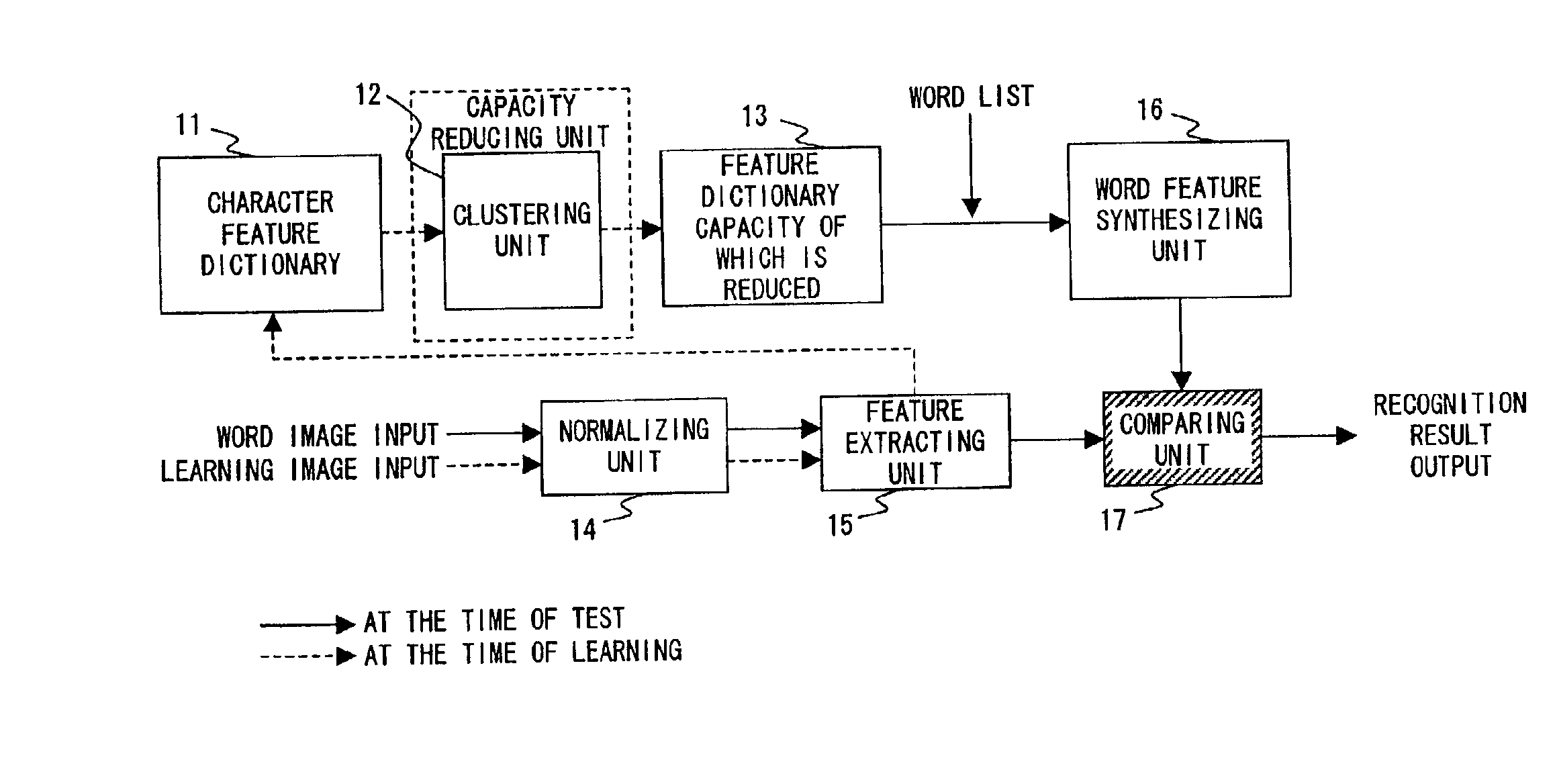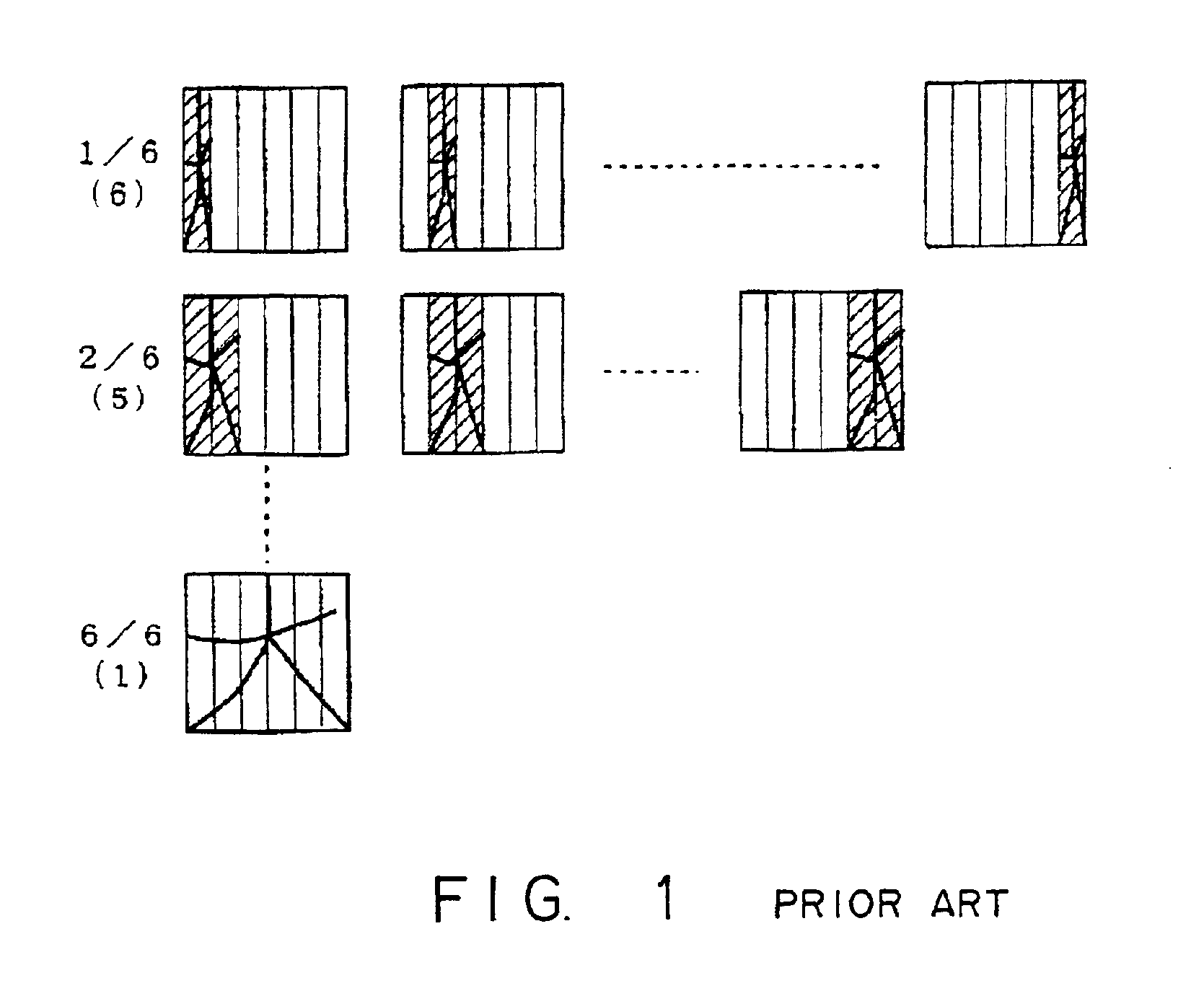Word recognition device, word recognition method, and storage medium
a word recognition and word recognition technology, applied in the field of word recognition, to achieve the effect of reducing the capacity of the feature dictionary
- Summary
- Abstract
- Description
- Claims
- Application Information
AI Technical Summary
Benefits of technology
Problems solved by technology
Method used
Image
Examples
embodiment 1
(1) Preferred Embodiment 1
[0053]The weighted direction code histogram feature has features of 8 directions, for example, within 7 (length)×7 (width) meshes partitioned for a normalized character image at the final stage of a feature extraction process as described above. Namely, it has features of 7×7×8 dimensions. Here, the 8 directions indicate the directions obtained by dividing 360° by 8 in units of 45° as shown in FIGS. 2 and 3.
[0054]In this preferred embodiment, feature vectors are clustered in units of columns so as to reduce the capacity of a character feature dictionary.
[0055]FIG. 5 shows the configuration of capabilities of a first preferred embodiment.
[0056]In this figure, feature vectors extracted from an input character image are stored in a character feature dictionary 11 at the time of learning.
[0057]A clustering unit 12 relating to this preferred embodiment clusters feature vectors in units of columns of a weighted direction code histogram feature for the character f...
embodiment 2
(2) Preferred Embodiment 2
[0097]A second preferred embodiment according to the present invention, with which the capacity of a feature dictionary is reduced by using a synthesis coefficient after column features are clustered, is explained next.
[0098]Assume that the number of coded column vectors (representative vectors) is m, the “p”th column vector is fp, and a synthesis coefficient is ki. In this case, it is examined whether or not there is a combination of a synthesis coefficient k and a column vector, which can be represented by the following equation (1). If there is a corresponding combination, the identification number of the column vector and the synthesis coefficient are registered. fp=∑in ki*fi (i≠p)(1)
[0099]As a result, it is sufficient to hold the synthesis coefficient k instead of a column vector within the feature dictionary, thereby reducing the capacity of the dictionary.
[0100]FIG. 13 shows the configuration of capabilities of the second preferred embodiment.
[01...
embodiment 3
(3) Preferred Embodiment 3
[0114]For a weighted direction code histogram feature, dimension compression is performed by making feature conversion such as a canonical discriminant analysis, etc. for extracted original features of 7×7×8 dimensions in order to eliminate the redundancy of information included in the features. As a result, the number of feature dimensions drops, for example, from 392 to approximately 100. As described above, features that are converted beforehand with feature conversion such as a principal component analysis, a canonical discriminant analysis, etc. are clustered and coded, thereby reducing the capacity of the dictionary.
[0115]FIG. 15 shows the configuration of capabilities of a third preferred embodiment.
[0116]In FIG. 15, feature vectors extracted from an input character image are stored in a character feature dictionary 11 at the time of learning as described above.
[0117]A capacity reducing unit 31 relating to this preferred embodiment is configured by a...
PUM
 Login to View More
Login to View More Abstract
Description
Claims
Application Information
 Login to View More
Login to View More - R&D
- Intellectual Property
- Life Sciences
- Materials
- Tech Scout
- Unparalleled Data Quality
- Higher Quality Content
- 60% Fewer Hallucinations
Browse by: Latest US Patents, China's latest patents, Technical Efficacy Thesaurus, Application Domain, Technology Topic, Popular Technical Reports.
© 2025 PatSnap. All rights reserved.Legal|Privacy policy|Modern Slavery Act Transparency Statement|Sitemap|About US| Contact US: help@patsnap.com



